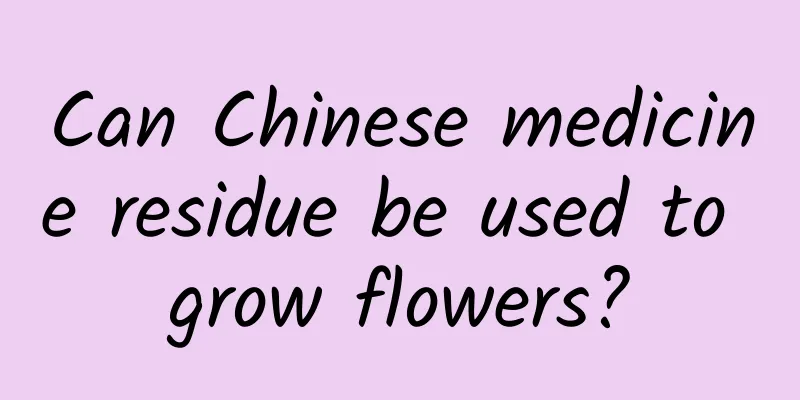The efficacy and function of Fushoucao

|
As people's research on traditional Chinese medicine deepens, they gradually understand the detailed ingredients in various traditional Chinese medicines and the impact of these ingredients on everyone's health. Below I would like to recommend a Chinese medicinal herb, Fushoucao, to you and describe its effects in detail. I hope it will be helpful to your study and research. [Other names] Xiansuiju (Taiwan Prefecture Records), Snow Lotus (Records of Western Regions), Changchunchamomile (Things in Blue Pearl), Suiju (Zhangzhou Prefecture Records), Binglihua, Dingbinghua (Illustrated Records of Northeastern Plants), Binglianghua, Snow Lotus (Pharmaceuticals), Binglanghua (Jilin Chinese Herbal Medicine). [Source] It is the whole herb with roots of Calendula officinalis, a plant of the Ranunculaceae family. In April, dig up the whole herb with roots, cut it into sections, and dry it in the sun. [Original form] Perennial herb. The rhizome is short and thick, with clusters of dark brown fibrous roots. The stem is green or violet, 5-15 cm high when flowering, and up to 30-40 cm high thereafter. It is sometimes branched at the lower part, with several light brown or white membranous sheaths near the base. The leaves grow larger after flowering, the lower leaves have long petioles and are glabrous; the leaf blades are triangular, 3-times pinnately divided, 1 time with 2 to 3 pairs of lobes, the last lobe is narrowly ovate to lanceolate with a short tip. The flower is solitary and terminal, about 3 cm in diameter; there are about 9 sepals, white or lavender, narrowly obovate, and nearly as long as the petals; there are about 10 petals, yellow, oblong or obovate-oblong, 1.2-2.2 cm long and 3-8 mm wide; there are many stamens; there are many carpels, and the ovary is pubescent. Achenes obovate, persistent style curved. Flowering period is from April to May. [Habitat distribution] It grows under sparse woods or in bushes on shady and moist hillsides. Distributed in Northeast China and other places. [Properties] The whole herb is dried, with wrinkled stems and leaves. The stem is cylindrical, slightly flattened at the top, with longitudinal lines, and a yellow flower on the top of the stem. The rhizome is short, fleshy, brown on the surface, about 0.4 to 0.8 cm in diameter, and yellow-white in cross section. The root is slender and cylindrical, brown on the surface, about 1 mm in diameter, with fine longitudinal grooves, brittle and easy to break, with a flat white cross section, and the vessels of the xylem appear as small light brown dots; the smell is faint, the root is extremely bitter and slightly pungent. [Chemical composition] The root contains cardiac glycosides, non-cardiac glycosides and coumarins. Cardiac glycosides include: canadensis glycoside, canadensis alcohol glycoside, jute glycoside A, convolvulus glycoside, K-convolvulus glycoside-β, somalin, etc. The aglycones that have been isolated from non-cardiac glycosides include: thunbergianone, isothunbergianone, adonina lactone, forsaurolactone, norforsauroldione, 12-ο-nicotinoylisothunbergianone, 12-ο-benzoylisothunbergianone, etc. Coumarin substances include: umbelliferone and scopoletin. 【Pharmacological action】 ① Cardiotonic effect [Toxicity] Poisoning by marigold may cause nausea, vomiting, drowsiness, and ventricular ectopic beats bigeminy. 【Properties and flavors】 "Modern Practical Chinese Medicine": "bitter, neutral, slightly toxic." 【Functions and indications】 Cardiotonic and diuretic. Treat palpitations, edema, and epilepsy. [Usage and Dosage] For oral administration: soak in wine or water, 1 to 2 fen. 【Clinical application】 ① Used to reduce heart rate [Note] In addition, there is another plant of the same genus, Pothos chinensis, in Xinjiang that is also used as medicine. 【Excerpt】 《*Dictionary》 Through the introduction in the above article, I believe everyone has a certain understanding of the aconite. This is a medicinal material we are very familiar with, but it has many medicinal properties and functions. Therefore, I hope everyone will consume it based on their own situation. |
<<: The efficacy and function of ascites grass
>>: The efficacy and function of blue leaf vine
Recommend
The efficacy and function of the bellows tree
The bellows tree is a traditional Chinese medicin...
Look once, it's weird, look again
There is a type of insect that lives on the earth...
Salute to Teacher's Day | With high-tech equipment entering the classroom, teachers are becoming more and more fashionable!
Today is Teacher's Day. When you think back t...
Will people who rely on coffee to "extend their lives" be healthier?
Coffee is a daily drink in modern people's li...
The effects and functions of small red hemp root
In our lives, the root of small red hemp has attr...
The efficacy and function of rhino skin
Chinese medicinal materials are very common, and ...
Who is the first animal in the world to make active sounds? When life began to chirp
Author: Global Science We are used to the fact th...
The efficacy and function of star-hair sheep milk
There are many kinds of common Chinese medicinal ...
What is the function of pine pollen tablets
Does everyone know what pine pollen is? Pine poll...
The efficacy and function of King Kong powder
Friends who don’t know King Kong Powder will not ...
Why are there debris after a rocket is launched? How serious are the consequences if it falls to the ground?
In recent times, some foreign media have been con...
Solving the mystery of life: Why can plants regenerate?
Produced by: Science Popularization China Author:...
The efficacy and function of croaker
Eel is a common Chinese medicine. It can be used ...
Attention! Vitamin B3 may increase the risk of heart disease and stroke, don’t take it blindly!
As the public's awareness of health gradually...









